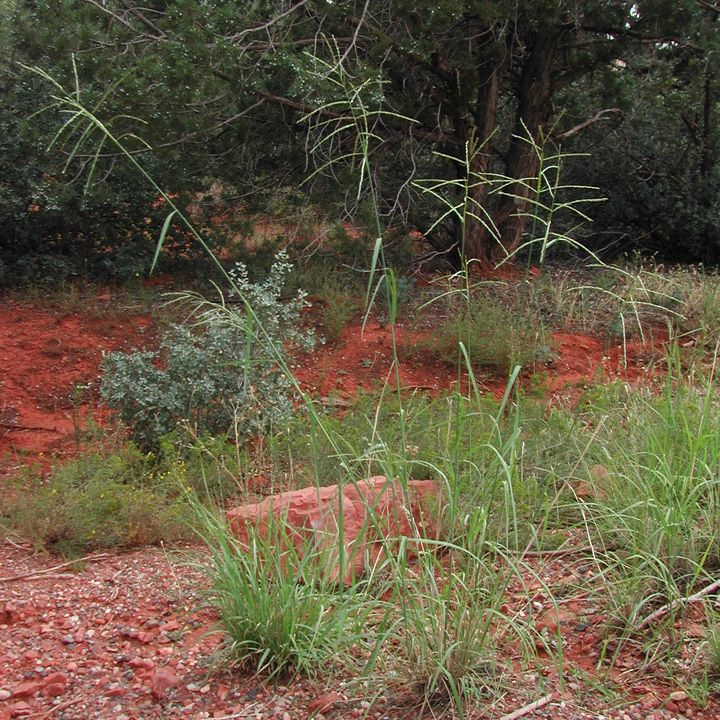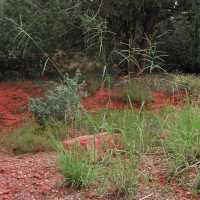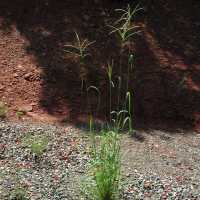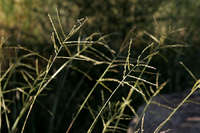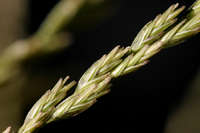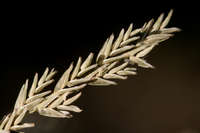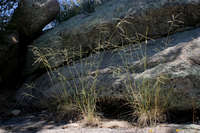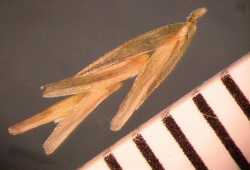Plants perennial. Culms (10)30-110 cm, round or basally compressed, tillering from the basal nodes, not branching from the aerial nodes, mostly glabrous, sometimes pilose basally; internodes solid. Sheaths sometimes with a pilose collar; ligules 1-2 mm, truncate, erose; blades (2)8-35 cm long, 2-8 mm wide, glabrous, strigose, or pilose. Panicles 8-20 cm, with 2-15 subdigitate or racemose branches; secondary panicles often hidden in the lowest leaf sheaths; branches 2-19 cm, ascending to spreading at maturity. Spikelets 4-12 mm, light brown to dark olive green, with 4-13 florets, often widely divergent at anthesis. Glumes narrowly triangular to ovate, acute; lower glumes 2.3-4.8 mm; upper glumes 3.3-6 mm; lemmas 3.5-5 mm, membranous, ovate to obovate, lateral veins glabrous or sericeous, hairs often restricted to the basal portion, sometimes also sericeous on the midvein and between the veins, apices obtuse to truncate, usually emarginate, unawned, sometimes mucronate; paleas ciliate on the margins; anthers 3, 0.3-1.6 mm. Caryopses 1.5-2.3 mm long, 0.9-1 mm wide, strongly dorsally compressed. 2n = 40, 60, 80.
Leptochloa dubia grows from the southwestern United States and Florida through Mexico to Argentina, often in well-drained, sandy or rocky soils. It provides fair to good forage, but is seldom abundant.
Perennials, Terrestrial, not aquatic, Stems nodes swollen or brittle, Stems erect or ascending, Stems geniculate, decumbent, or lax, sometimes rooting at nodes, Stems caespitose, tufted, or clustered, Stems terete, round in cross section, or polygonal, Stems compressed, flattened, or sulcate, Stems branching above base or distally at nodes, Stem internodes hollow, Stems with inflores cence less than 1 m tall, Stems with inflorescence 1-2 m tall, Stems, culms, or scapes exceeding basal leaves, Leaves mostly cauline, Leaves conspicuously 2-ranked, distichous, Leaves sheathing at base, Leaf sheath mostly open, or loose, Leaf sheath smooth, glabrous, Leaf sheath hairy at summit, throat, or collar, Leaf sheath and blade differentiated, Leaf blades linear, Leaf blades 2-10 mm wide, Leaf blades mostly flat, Leaf blade margins folded, involute, or conduplicate, Leaf blades mostly glabrous, Leaf blades more or less hairy, Ligule present, Ligule an unfringed eciliate membrane, Inflorescence terminal, Inflorescence solitary, with 1 spike, fascicle, glomerule, head, or cluster per stem or culm, Inflorescence a panicle with narrowly racemose or spicate branches, Inflorescence a panicle with digitately arranged spicate branches, Inflorescence with 2-10 branches, Inflorescence branches more than 10 to numerous, Inflorescence branches 1-sided, Inflorescence branches pa ired or digitate at a single node, Flowers bisexual, Spikelets sessile or subsessile, Spikelets laterally compressed, Spikelet less than 3 mm wide, Spikelets solitary at rachis nodes, Spikelets all alike and fertille, Spikelets bisexual, Spikelets disarticulating above the glumes, glumes persistent, Spikelets disarticulating beneath or between the florets, Spikelets secund, in rows on one side of rachis, Rachilla or pedicel glabrous, Glumes present, empty bracts, Glumes 2 clearly present, Glumes distinctly unequal, Glumes shorter than adjacent lemma, Glumes keeled or winged, Glumes 1 nerved, Lemmas thin, chartaceous, hyaline, cartilaginous, or membranous, Lemma 3 nerved, Lemma body or surface hairy, Lemma apex dentate, 2-fid, Lemma awnless, Lemma mucronate, very shortly beaked or awned, less than 1-2 mm, Lemma straight, Palea present, well developed, Palea membranous, hyaline, Palea about equal to lemma, Palea 2 nerved or 2 keeled, Stamens 3, Styles 2-fid, deeply 2-branched, Stigmas 2, Fruit - caryopsis.


